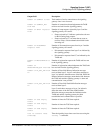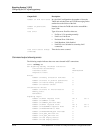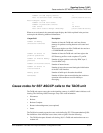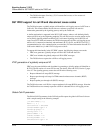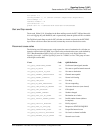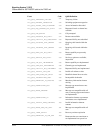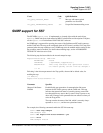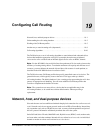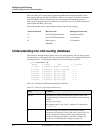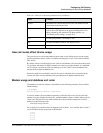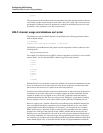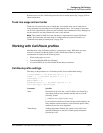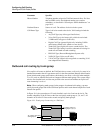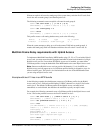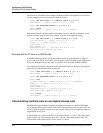
APX 8000/MAX TNT/DSLTNT Physical Interface Configuration Guide Preliminary May 9, 2000 19-1
19
Configuring Call Routing
:
The TAOS unit uses a set of call-routing algorithms to route inbound and outbound calls to
devices that handle the appropriate call type. For example, the unit routes an inbound
voice-service call to a modem and an inbound digital-service call to an HDLC channel.
Note: For the APX 8000, slots are divided into four quadrants of 10 slots each to increase the
efficiency of routing among shelves. To maintain maximum call capacity and efficient use of
resources, you must balance the network-side and host-side resources in each quadrant, as
described in the APX 8000 Hardware Installation Guide.
The TAOS unit creates Call-Route profiles that specify generalized routes to its devices. The
generalized routes, which typically route on the basis of call type, make up a default
call-routing database. The default database is just a starting point, representing the unit’s best
guesses for appropriate call handling. You can create additional Call-Route profiles that
override or complement the default call routes.
Note: The system does not route calls to a device that has no applicable entry in the
call-routing database, so be careful not to delete default entries without providing a
replacement.
Network, host, and dual-purpose devices
Slot cards that are used to establish and maintain the physical connection for a call are network
cards. Network cards do not support protocol stacks such as PPP or Frame Relay. Instead, they
rely on another card, such as a Hybrid Access card, to remove link encapsulation and process
the call’s protocol information and thereby terminate the call in the system.
Series56 II and Series III cards, MultiDSP cards, Hybrid Access (HDLC) cards, modem cards,
and some other cards that terminate inbound calls are referred to as host cards. An individual
channel or modem on a host card is referred to as a host device.
Network, host, and dual-purpose devices . . . . . . . . . . . . . . . . . . . . . . . . . . . . . . . . . . 19-1
Understanding the call-routing database . . . . . . . . . . . . . . . . . . . . . . . . . . . . . . . . . . . 19-2
Working with Call-Route profiles . . . . . . . . . . . . . . . . . . . . . . . . . . . . . . . . . . . . . . . . 19-5
Another way to route incoming calls (deprecated) . . . . . . . . . . . . . . . . . . . . . . . . . . . 19-9
Call routing algorithms . . . . . . . . . . . . . . . . . . . . . . . . . . . . . . . . . . . . . . . . . . . . . . . 19-10



